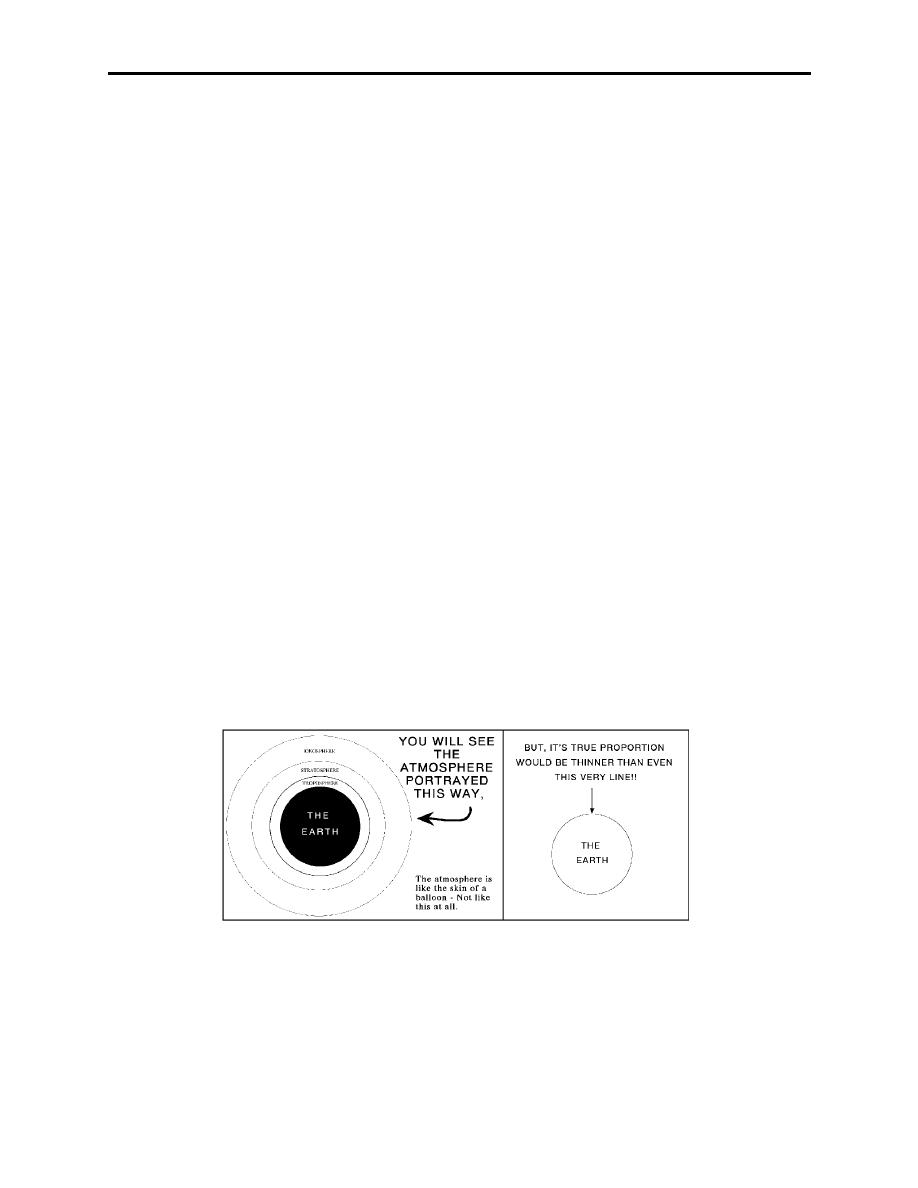 |
|||
|
|
|||
|
Page Title:
Figure 1-1 Thickness of the Earth's Atmosphere |
|
||
| ||||||||||
|
|  CHAPTER ONE
AVIATION WEATHER
2.9
Define indicated altitude, calibrated altitude, Mean Sea Level (MSL) altitude, Above
Ground Level (AGL) altitude, pressure altitude, and density altitude.
2.10
Describe the effects of pressure changes on aircraft altimeters.
2.11 State the effects of temperature deviations from the standard lapse rate on aircraft
altimeters.
102.
REFERENCES
1.
Weather for Aircrews, AFH 11-203, Volume 1, Chapters 1, 3, and 4.
2.
Aviation Weather for Pilots and Flight Operations Personnel, Chapters 1-3.
103.
STUDY ASSIGNMENT
Review Chapter One and answer the study questions.
104.
THE ATMOSPHERE
The atmosphere is the gaseous covering of the Earth. This envelope of air rotates with the Earth
but also has a continuous motion relative to the Earth's surface, called circulation. It is created
primarily by the large temperature difference between the tropics and polar regions, and is
complicated by uneven heating of land and water areas by the Sun.
105.
ATMOSPHERIC LAYERS
If the Earth were compared to a baseball, the gaseous covering would be about as thick as the
baseball's cover (Figure 1-1).
Figure 1-1 Thickness of the Earth's Atmosphere
It is divided into layers that have certain properties and characteristics (Figure 1-2). The lowest
two layers are the troposphere and stratosphere, with the tropopause being a region between these
two. The troposphere is the layer adjacent to the Earth's surface. It varies in height from an
average 55,000 feet over the equator to 28,000 feet over the poles.
1-2
General Structure of the Atmosphere, and Atmospheric Temperature and Pressure
|
|
Privacy Statement - Press Release - Copyright Information. - Contact Us |